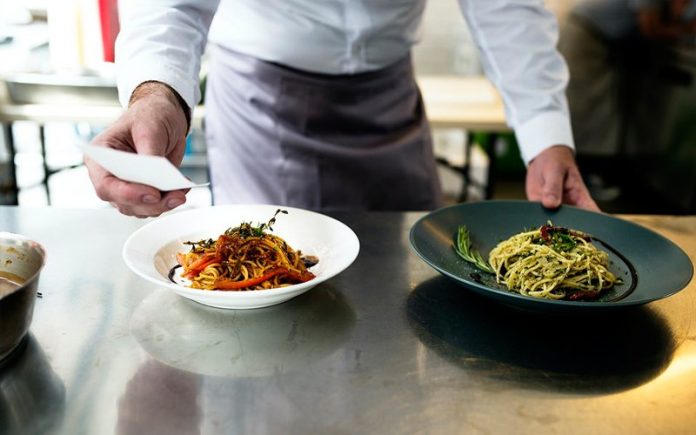
Finding success in the restaurant industry isn’t easy, and this pandemic has illustrated that restaurants are failing hard.
Having worked and met chefs, bartenders, business owners at various levels, here are the most common reasons why restaurant businesses fail most of the time.
Insufficient cash reserve for the first year
There will be hiccups in the first 12-16 months of operations. It would help if you set aside enough cash reserve in the first year of financial operations.
“Our business model is to have a cash reserve that can weather through at least three to six months on losses.
“Our profits go to the bank and we do not operate our cash flow on a “day to day” whereby whatever earnings made today is distributed among the partners tomorrow,” says Nico of Concubine KL, which gained a reputation as the must-visit restaurant bar in Chinatown Kuala Lumpur.
High rental
“If the rent is too high, don’t take it up, even if it is a golden location. My range is always not more than 10% of expected revenue: the better the concept, the less important the location,” says Choti Leenutaphong of Foodie Collection in Bangkok, which consist of Vesper Bar (World’s 50 Best Bars, Asia’s 50 Best Bars 2020), one Michelin-starred 80/20 Bangkok, il Fumo, La Dotta, and 1919 – the only Campari flagship bar in Thailand.
Staff management

Your employees are your most significant assets. Pay attention to your staff morale. Disgruntled staff can damage your restaurant’s reputation.
Indra Kantano, co-founder and director of Jigger & Pony Group in Singapore shares, “It is understood that the turnover rate in this industry is high. We created a set of shared values and a corporate purpose that guides us up until today.”
The group reinforces these shared values with their staff by:
- Having the statements posted up in all outlets.
- Hosting the Annual Shared Values Awards ceremony whereby five standout staff will be the recipients for individual values, and one-star individual that embodies all five values will be crowned Pony of the Year.
- Incorporating said values into annual performance reviews.
For Tay Hui Ying, the director of marketing for Platform Hospitality Group in Kuala Lumpur, staff morale is most likely to be low everywhere in such a crisis.
She adds, “As part of the management team or as a business owner, this is when you need to surface and hold the fort. You will need to inspire your team to take on your side.”
Spending unnecessarily on fit-outs
Spending on the ‘not-so-important’ items is one of the fatal mistakes as a first-time restaurateur. A restaurant that runs out of capital even before it can run optimally to make a profit is heading towards failure.
“A good experience for the guest need not be in the form of a nicely-designed menu or decorated ambience. Instead, tasty food and drinks cooked with soul, and a personal connection could make the guest return,” says Hui Ying.
Oversight on finances

Financial planning plays a critical role in the success of your restaurant. Analyse your POS (point of sale) reports to identify the gaps and mitigate them.
Joel Foong of FIN devised a three-scenario model to keep business in check:
- Scenario 1: bare minimum – before breaking even
- Scenario 2: breakeven – where we make a close to marginal profit
- Scenario 3: profit-making
“Start with food cost, followed by fixed costs. Next, we input the sales data from Year 1 onwards, which would give an estimation of our projected sales. We’ll break it down into scenarios where my fluctuating operating costs will be based on a percentage of my total food costs.
“With all these factors scaled in, we would have our breakeven benchmark and daily sales target we need to meet. Referring to Scenario 3, my target goals would be where everyone gets their increments, and business is doing well,” says Foong.
Overlooking the financial aspect was one of the factors why Malaysia’s pioneering bar Omakase + Appreciate had to close after six years.
Internal theft and pilfering
Even your top-performing staff might succumb to theft. The first step in reducing employee theft is to be prepared for the most common forms:
- Food or inventory thefts: employees take food for themselves.
- Cash checks voids: employees edit the order to reflect a smaller balance due and pocket the difference. Employees tell the customer the cash till is out of order and issue a manual receipt and pocket the cash.
- On-counter thefts: employees empty the cash counter and disappear.
- Dine and dash: some customers would pay the exact amount and leave it on the table, but employees claim diners left without paying for their meal.
The most successful restaurants will continuously improve their business by finding opportunities to reduce costs and increase profits.
This article first appeared on Set the Tables.
Set the Tables is positioned to inspire and educate those already in the industry as much as the aspiring reader who dreams of a future in the food business, and maybe even the merely curious tantalised by the vast and irresistible universe of food and drink.



